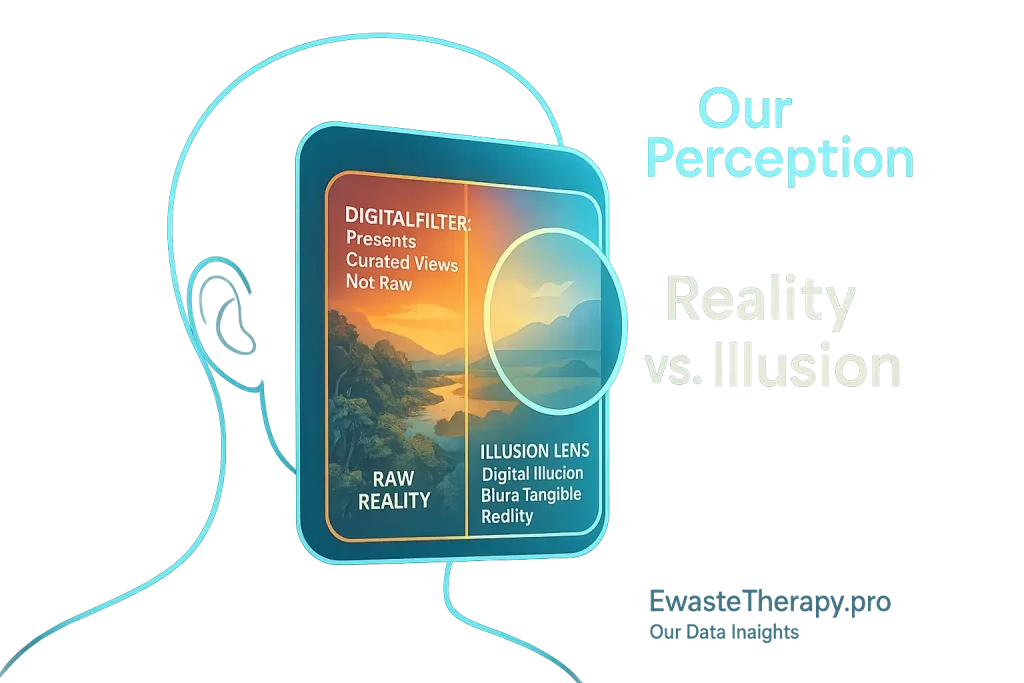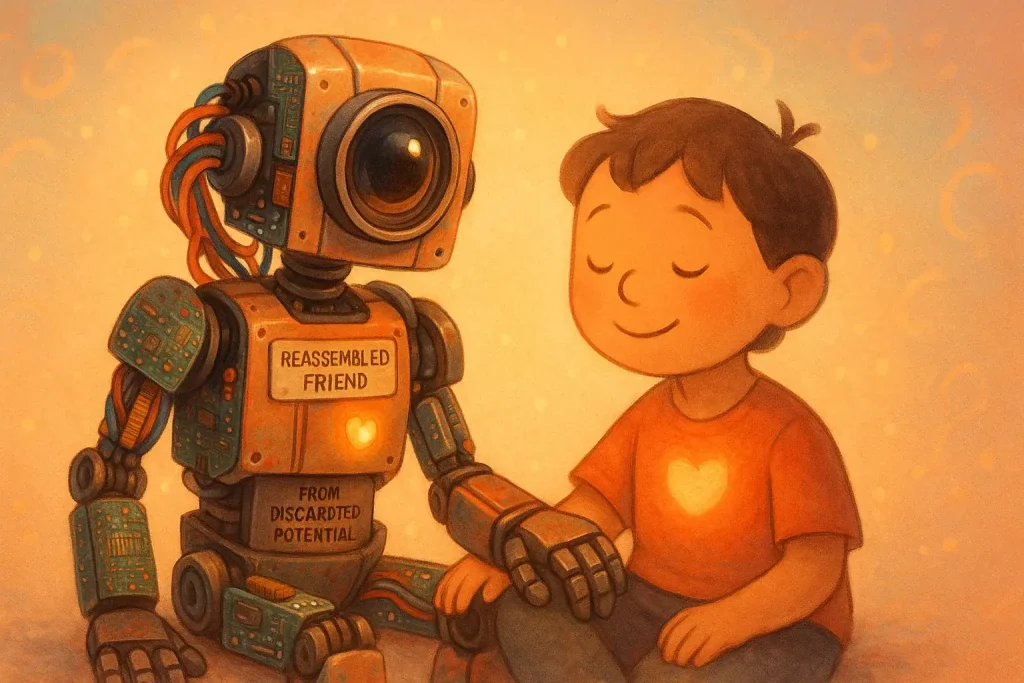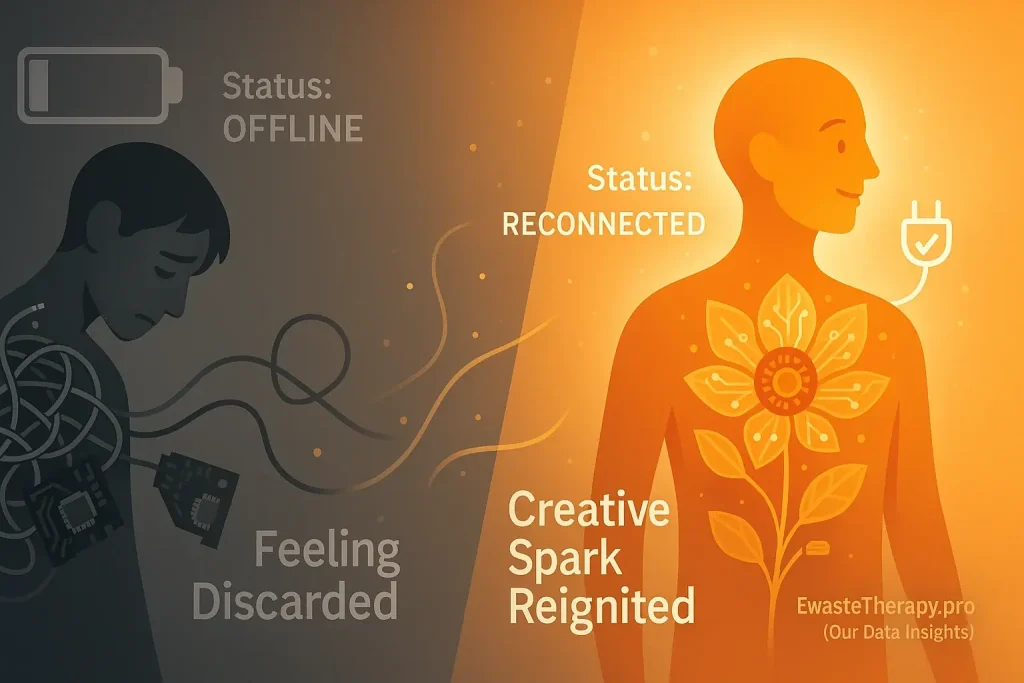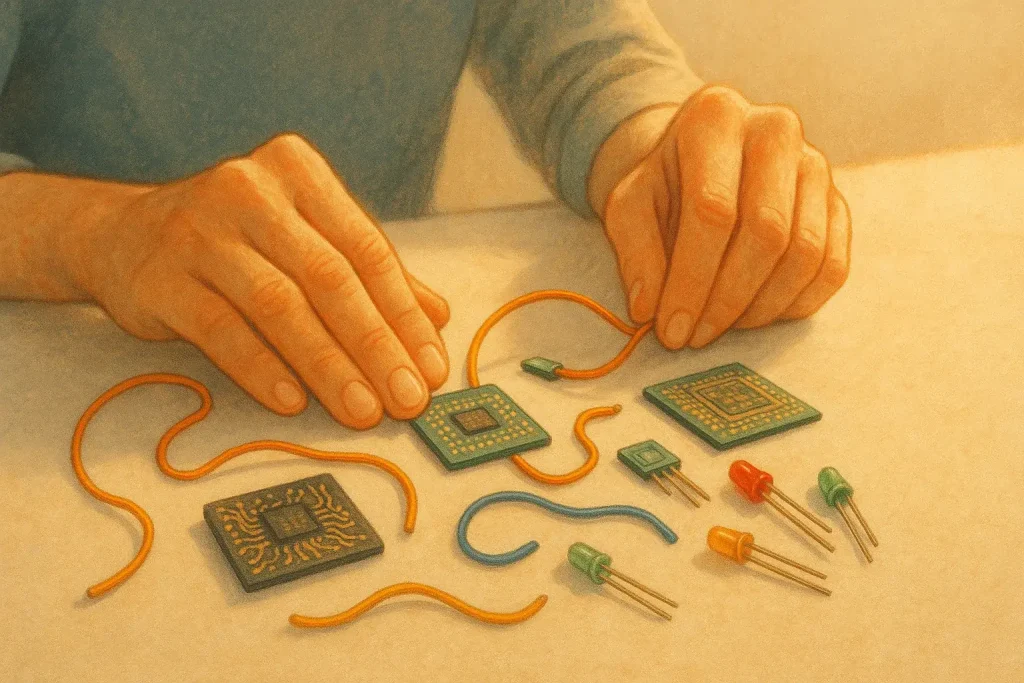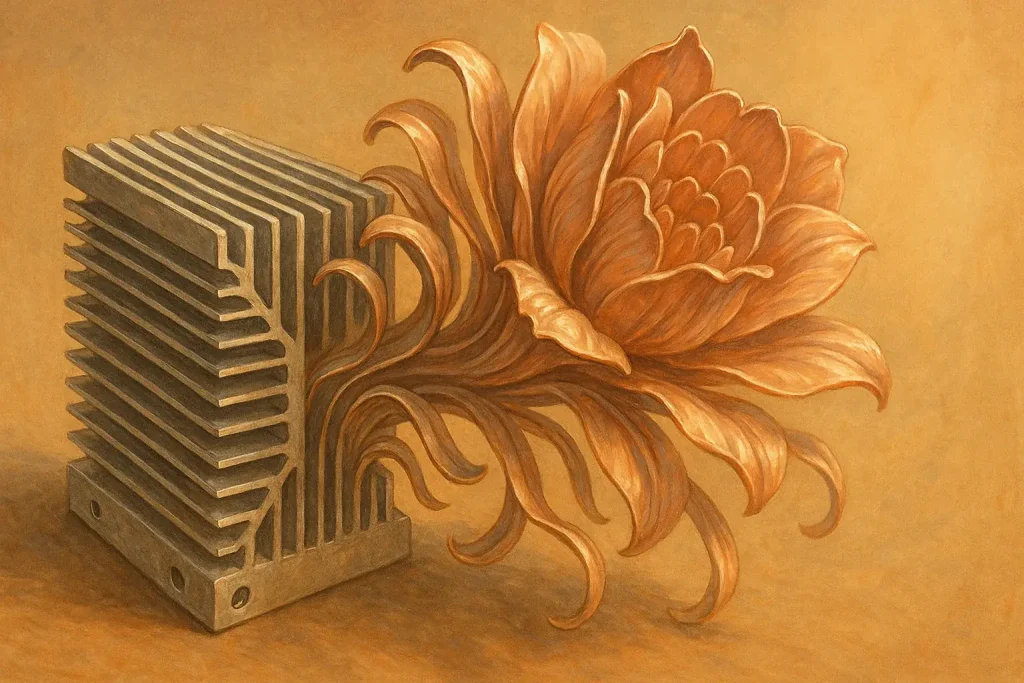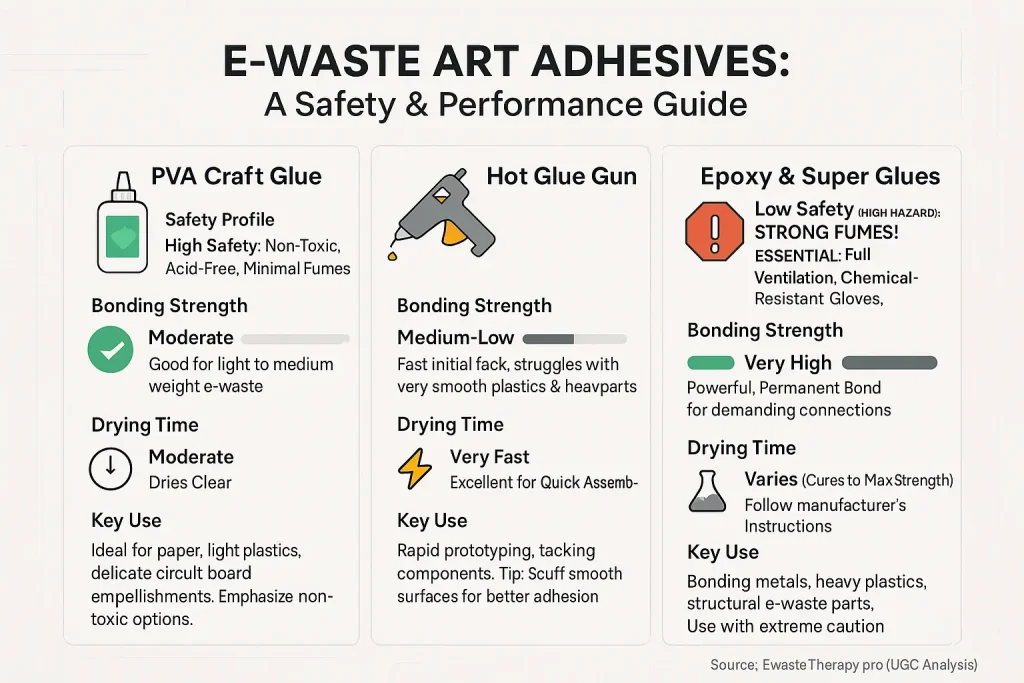E-Waste Art Therapy: A New Path to Healing Through Discarded Tech
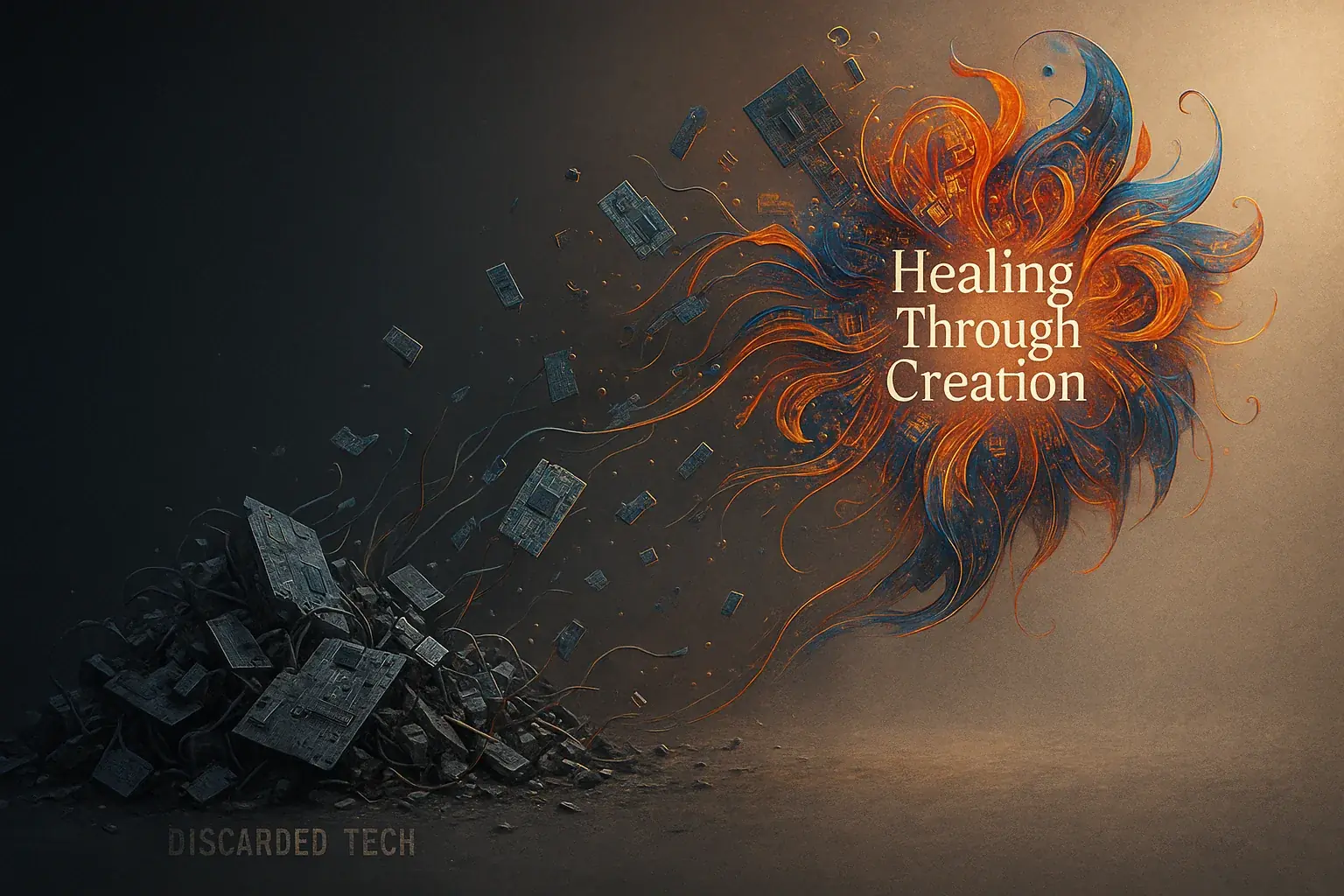
Does modern technology sometimes feel overwhelming? Many people share this digital fatigue. E-waste art therapy offers a potent, tangible response. This unique practice transforms discarded electronic components into art. You give these objects new life, crafting deeply personal expressions. This process fosters healing and unlocks self-discovery.
Growing interest surrounds this innovative field. Our community's experiences reveal its power. Imagine finding peace, even purpose, amidst the very gadgets that once fueled digital fatigue. This is the unexpected, transformative journey many users describe. A natural question arises. How does this emerging path compare to established traditional art therapy?
Both paths offer profound healing. E-waste art therapy, our community finds, adds unique dimensions. It blends creativity with vital environmental consciousness. Deep psychological exploration unfolds. The collective experience reveals unspoken truths. Unexpected practical moments define this distinct practice.
Beyond Paint & Clay: The Unique Material & Process of E-Waste Art Therapy
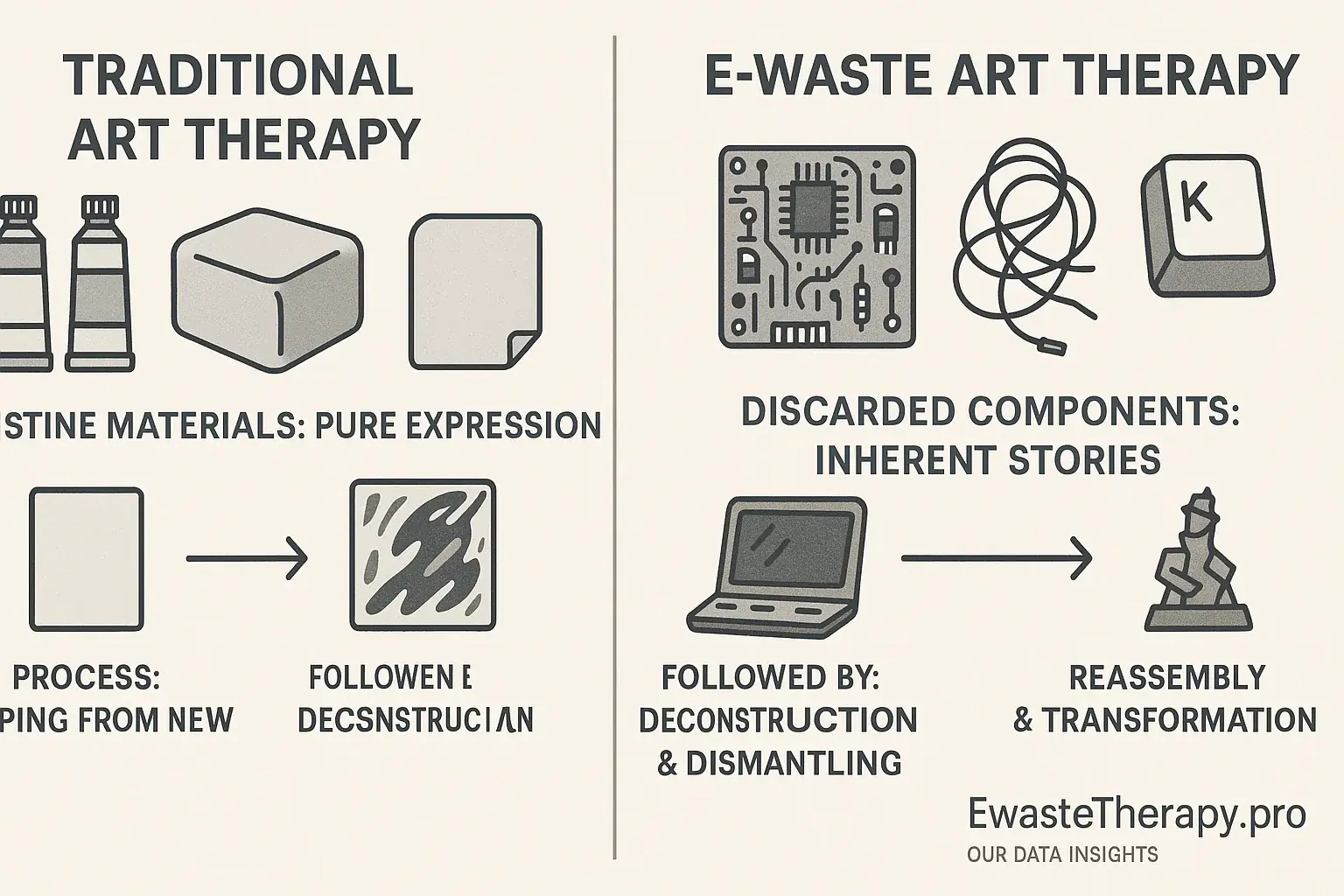
Traditional art therapy utilizes conventional materials. Paint, clay, and paper offer a direct, unmediated space for pure expression. E-waste art therapy, however, introduces entirely different elements. Discarded circuit boards, tangled wires, and lone keyboard keys become the medium. Our analysis consistently shows these items carry their pasts. This inherent story shapes the artistic journey from its very start.
The creative process also diverges significantly. Traditional methods often focus on adding material. Shaping from new. E-waste art frequently begins with deconstruction. A taking apart. Many users describe the satisfying act of dismantling an old phone or keyboard. It feels like breaking down old internal structures, they report. New configurations then reveal themselves from the pieces. This very physical engagement of disassembly and reassembly often mirrors internal therapeutic work, a core element our findings highlight.
The 'found object' nature of e-waste introduces another layer. Traditional art often starts with a blank canvas. Pure potential. E-waste components, by contrast, are pre-existing; they have lived lives. Their scuffs, breaks, and outdated functions are not flaws. Our user experiences reveal these 'imperfections' often become creative catalysts. They guide the artistic journey in unexpected, powerful ways. This fosters profound adaptability and new ways of seeing. The 'already broken' aspect of e-waste provides a unique platform for exploring themes of repair, resilience, and transformation, unlike pristine traditional materials.
Decoding the Deep: Symbolic Power & Therapeutic Outcomes
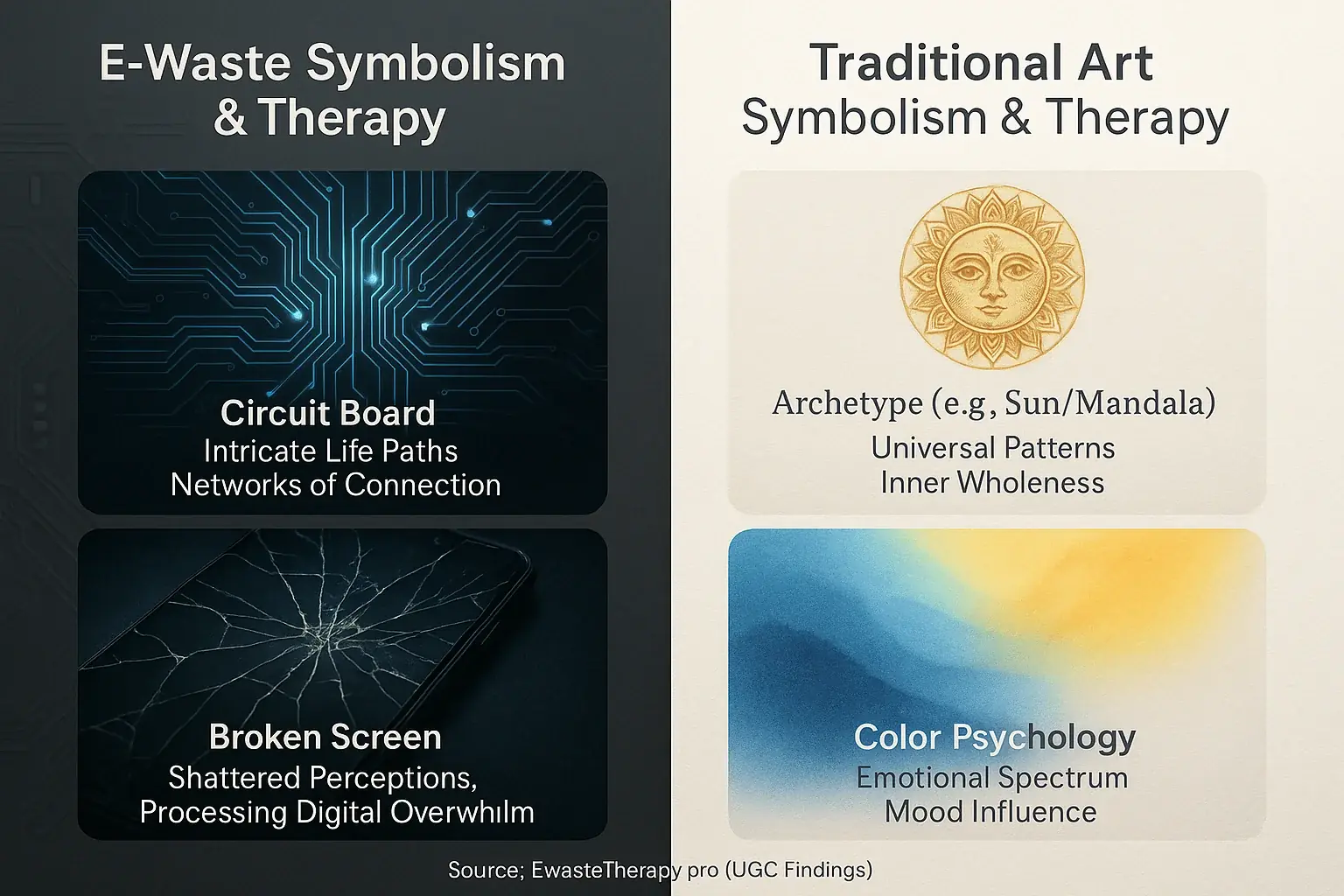
Traditional art therapy brilliantly utilizes universal symbols. It taps into shared archetypes. EwasteTherapy.pro's analysis of user experiences reveals e-waste art therapy adds a potent, contemporary symbolic layer. Think about circuit boards. Users see them as intricate life paths, networks of connection. Wires might represent complex emotional entanglements or the vital flow of energy. Microchips? People often link these to core memories or even their fundamental programming. This is rich territory.
This distinct symbolism powerfully translates into tangible therapeutic outcomes. Many users describe a profound shift. Dismantling an old, broken phone to craft art about digital overwhelm, for instance, offers a concrete way to process abstract anxieties. It is like holding that pervasive tech-stress directly in your hands. Then, you actively reshape it. This direct engagement with 'tech artifacts' offers a unique pathway. It helps users address digital fatigue, feelings of obsolescence, or even the sensation of being 'broken' in a constantly connected society. The relief can be surprising.
Here's a truth emerging from countless user stories. E-waste art therapy provides a unique avenue for processing modern psychological burdens. These are pressures traditional art therapy might not engage with the same visceral, immediate impact. The transformation metaphor is central. Taking discarded, seemingly 'useless' technology and birthing something new, something deeply meaningful, directly mirrors personal healing. It echoes profound growth. New purpose from old parts. It’s a powerful journey many are now discovering.
Navigating the Practicalities: Safety, Accessibility & Cost
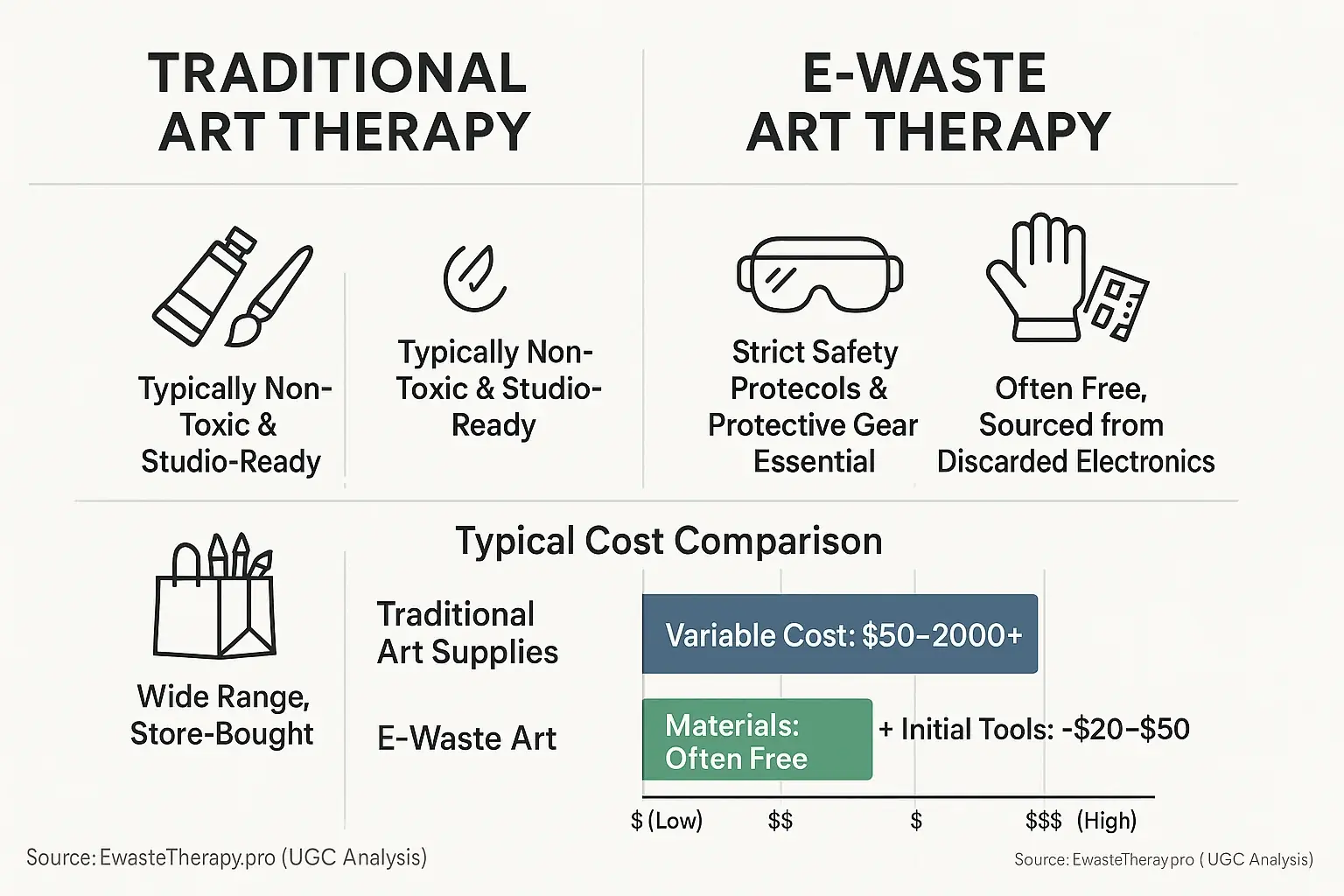
Safety considerations differ significantly. Traditional art materials are typically non-toxic. They are often studio-ready. E-waste art therapy, however, demands strict safety protocols. Many users initially worry about toxic components or sharp edges. Our extensive user experience analysis at EwasteTherapy.pro reveals a common pattern: individuals describe immense relief upon mastering proper disassembly techniques and protective gear use. This knowledge transforms fear into empowered creation. The unspoken truth? Safety is paramount; it is non-negotiable in e-waste art therapy.
Accessibility and cost present another contrast. Traditional art supplies span a wide cost spectrum. Some materials are quite inexpensive. Others carry premium price tags. E-waste materials, conversely, are frequently free. Discarded electronics offer abundant resources for projects. This makes e-waste art remarkably accessible from a material cost perspective. An initial investment in specialized disassembly tools might be necessary, according to user reports.
E-waste art therapy requires a careful balance. Our findings indicate that more upfront safety knowledge is essential. Diligent material sourcing is also a key factor for safe practice. Yet, the potential benefits are substantial. The availability of free materials can make this a very cost-effective pursuit. More importantly, the unique therapeutic depth reported by users offers profound personal rewards. This journey of transforming perceived dangers into controlled, meaningful art empowers many individuals engaging with our frameworks.
Which Path is Right for You? E-Waste vs. Traditional Art Therapy Suitability Quiz
Discover Your Ideal Art Therapy Path!
Choosing an art therapy path sometimes feels complex. EwasteTherapy.pro developed this quiz for clarity. It helps you assess e-waste art therapy against traditional methods. This quick tool provides genuine insight.
The quiz considers your personal comfort with technology. It also weighs safety perceptions. Your specific therapeutic goals are central. Many users, our analysis of user experiences reveals, find themselves at a crossroads. They wonder if the unconventional path of e-waste art is truly for them. This quiz helps clarify that inner debate. It offers a personalized compass. Honest answers ensure the most accurate outcome.
Choosing Your Healing Canvas: Both Paths Lead to Growth
Both e-waste art therapy and traditional methods offer profound healing. Neither path is inherently superior; each caters to unique personal preferences. Ultimately, effective art therapy prioritizes your journey over specific materials. Many users discover the act of creation itself, regardless of medium, unlocks profound insights.
E-waste art therapy often resonates deeply with specific individuals. Its unique symbolism, environmental themes, or processing tech anxieties draws them. Trust your intuition. Explore the path that truly calls to you. Creative expression, in any form, holds universal power for genuine healing and self-discovery.
